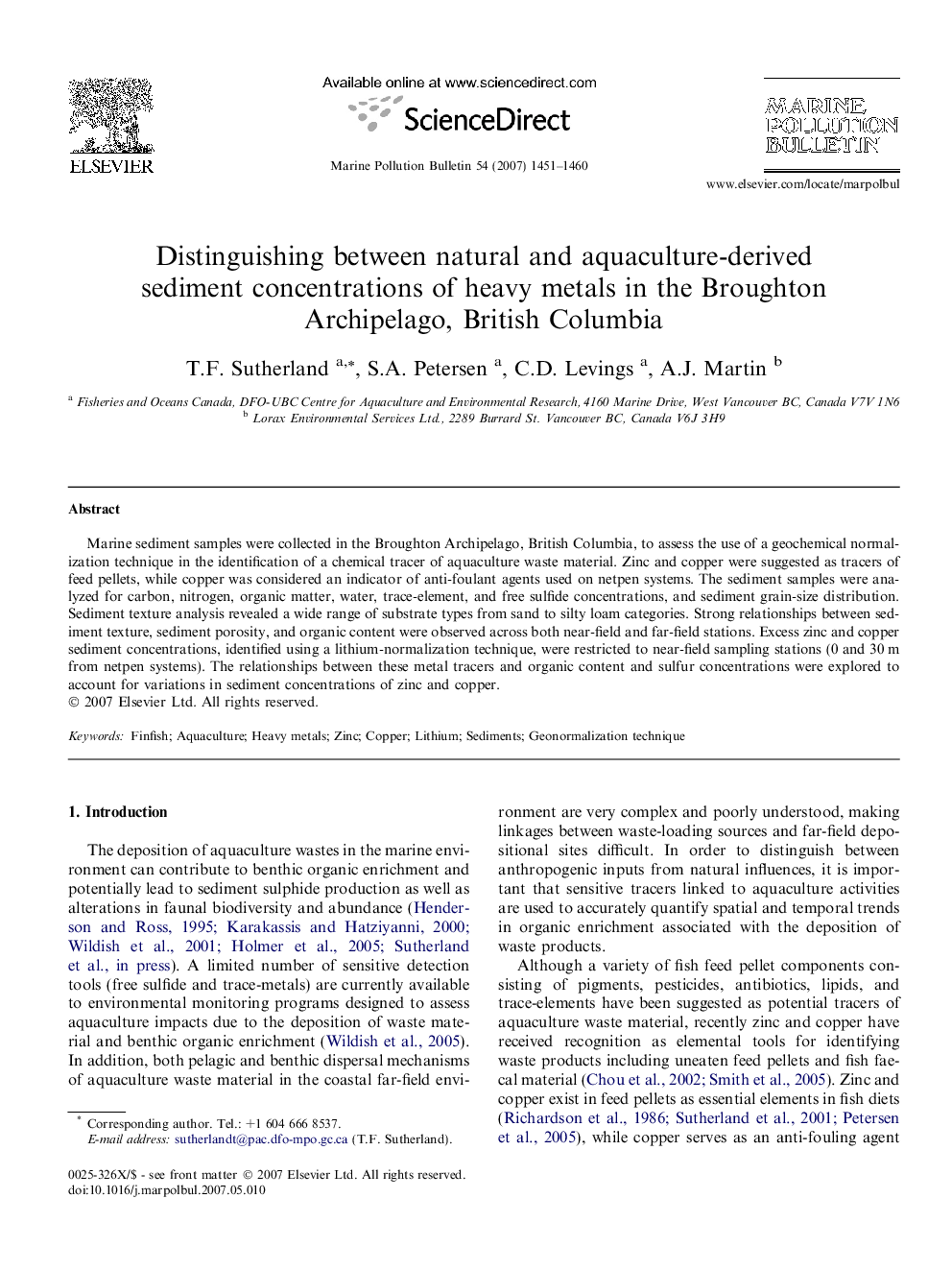| Article ID | Journal | Published Year | Pages | File Type |
|---|---|---|---|---|
| 4477528 | Marine Pollution Bulletin | 2007 | 10 Pages |
Marine sediment samples were collected in the Broughton Archipelago, British Columbia, to assess the use of a geochemical normalization technique in the identification of a chemical tracer of aquaculture waste material. Zinc and copper were suggested as tracers of feed pellets, while copper was considered an indicator of anti-foulant agents used on netpen systems. The sediment samples were analyzed for carbon, nitrogen, organic matter, water, trace-element, and free sulfide concentrations, and sediment grain-size distribution. Sediment texture analysis revealed a wide range of substrate types from sand to silty loam categories. Strong relationships between sediment texture, sediment porosity, and organic content were observed across both near-field and far-field stations. Excess zinc and copper sediment concentrations, identified using a lithium-normalization technique, were restricted to near-field sampling stations (0 and 30 m from netpen systems). The relationships between these metal tracers and organic content and sulfur concentrations were explored to account for variations in sediment concentrations of zinc and copper.
